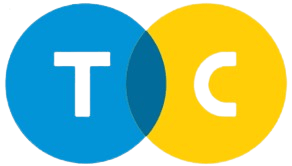In today’s business world, data security is more important than ever. With the rise of hacking and cybercrime, companies need to be able to protect their information from unauthorized access. Access control is one way that companies can do this. By controlling who has access to certain areas of the company’s network, they can limit data breaches. While no system is perfect, access control can help to reduce the risk of data loss or theft.
Importance of Access Security
One of the most fundamental security measures for companies is access control. However, some organizations are resistant to implementing them. This resistance is often due to human nature.
People usually prefer the convenience and fewer steps and are inclined to reuse their passwords for multiple accounts. In fact, according to the latest report from Verizon, 37% of data breaches result from compromised credentials. A comprehensive access control system can prevent this from happening.
Access control controllers analyze user credentials against a list of permitted users and groups. They also compare credentials against the list of rules for authorized access.
These rules include credential type, entry schedule, active lockdowns, user permissions, etc. When a user is authorized, they can access the desired resource or area. If the user has invalid credentials, access is denied.
Security administrators also analyze the data generated by access control devices to identify abnormal behaviors and identify potential security breaches.
Identifying Areas for Access Control
Access control is a way to regulate the use of resources in a computing environment. It helps minimize risks and ensures that only authorized individuals can access certain areas. It can be implemented using physical or logical access controls.
Physical access control involves restricting physical IT assets, while logical access control limits the use of data, system files, or network connections.
When identifying areas for access control in companies, consider the needs of each department or employee. Do they require different permissions? What are the risks associated with varying levels of access? Identifying these needs is essential in choosing the right access control system. If a specific area needs to be restricted to employees, consider a system that allows only authorized personnel to gain access.
As information security has become a priority for businesses, access control is an essential part of ensuring the protection of sensitive information. Without access control, organizations are more susceptible to cyberattacks from both internal and external sources.
Additionally, increasing numbers of people work from home, creating even more security vulnerabilities. With appropriate access control policies, companies can keep data safe and secure while minimizing the costs of implementing and maintaining these controls.
Restrict Access to Certain Areas
Access control can be a great way to ensure that only authorized individuals can access certain areas. Some of the most common areas companies need to restrict access to include employee break rooms, stock rooms, management offices, warehouses, loading and unloading docks, IT rooms, and more. Using these access controls can ensure that sensitive information doesn’t end up in the wrong hands.
Access levels can also be managed by assigning users to specific roles. For instance, an Administrator can only view staff in the Sydney office, while a Supervisor can only see direct reports across all locations.
In addition, an Administrator can restrict access to specific projects, substitutes, and information. A Supervisor can also manage staff access to team pages.
Access Control Process
Companies often have a requirement to comply with regulatory compliance, and a sound access control system is an integral part of the compliance strategy.
Compliance is vital for companies in terms of security and minimizing their risk of security breaches. A number of compliance frameworks can be implemented to meet regulatory requirements, and choosing the right one is critical to meeting these requirements.
For example, some companies adhere to SOC 2 compliance, a voluntary data security framework. This standard ensures the confidentiality, integrity, and availability of data.
Access control for companies can be automated using a device, software, or hardware. Some systems are biometric, meaning they can be used to identify an individual. The system can also be integrated with other building management systems.
This can help improve facility planning and reduce costs. A sound access control system should be flexible and allow for employees’ automatic adding and removal.
Reduce the Risk of Theft
Access control systems are an essential part of a security system. They can control who has access to sensitive areas and restrict the movement of staff. Using these systems can help you reduce the risk of theft.
For example, you can limit new hires’ access to a stockroom or specific area. You can also control who has access to sensitive data or regions by setting up a personalized key fob for each employee.
Many access systems can be remotely managed from a server in the cloud. This allows administrators to change the design or temporarily unlock doors for trusted vendors. You can also print out security reports to monitor the security of your operations.
Once you implement an access control system, you’ll have peace of mind knowing that your most valuable assets are protected.

